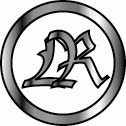One of the greatest joys of writing a
book is having the opportunity to share it with others. So much
effort and creativity is put into a writer's work that the sharing of
it can be one of the most rewarding experiences of the process.
This is one of the motivators that
sends so many novelists in search of book printers and
self-publishing companies. There they are inundated with vague
information (at least, that's how it was in the past when I first
started Lily Ruth Publishing) about ISBNs, barcodes, LCCN's, book
layout, bleeds, etc.
So what are these items, and why are
they important? I'll start with the ISBNs in this article and cover
the other topics in later posts.
An ISBN is a 10 or 13-digit
International Standard Book Number that identifies the publisher of
the title. This number is assigned only to books published in the
United States and can be purchased in blocks of 10, 100, 1,000,
10,000 and 100,000 numbers. It is also possible to purchase just one
ISBN for a self-published book.
Beginning publishers often ask if it is
necessary to purchase an ISBN for their book. The answer depends on
what their publishing goals are. To publish a fiction or nonfiction
title for the sake of sharing it with family members and close
friends might not warrant an ISBN, as an ISBN useful and necessary in
marketing.
I've heard it asked “Couldn't I put a
barcode on my book and skip the ISBN?” While it is certainly
possible to purchase a barcode without first owning an ISBN, keep in
mind that most bookstores use the Bookland EAN barcode because
it allows for the embedding of an ISBN.
The U.S. Bowker ISBN Agency states on
their website that “the purpose of an ISBN is to establish and
identify one title or edition of a title from one specific publisher
and is unique to that edition, allowing for more efficient marketing
of products by booksellers, libraries, universities, wholesalers and
distributors.”
So if you wish to market and sell your
title through bookstores and distributors (or even online, in most
cases) you will definitely want to purchase an ISBN.
Finally, make sure you purchase your
ISBN(s) through the official U.S. ISBN agency, Bowker. This is
especially important because ISBNs purchased through Bowker are
assigned to the purchaser and can't be reassigned.
There are websites out there that will
try to sell you a 'used' ISBN. I encountered this back when I ran the
first print run of “My Weird Family Series: My Vampire Cousin.”
At the time, the Bowker website was less than user-friendly and I was
having difficulty figuring out how to purchase a single ISBN from
them. I ran across a handful of websites offering to sell a single
ISBN and transfer ownership, and decided to call Bowker's customer
support number before making a purchase. At that time I was told ISBN
ownership could not be
transferred and purchasing a single ISBN through another site or
individual would result in them owning the unique identifier to my
client's book.
Moral
of the story? Always do your homework when it comes to book
printing/publishing. There's a lot to learn and a lot of information
to take in at once, but it's better to study it all up front so you
can make decisions in the best interest of your book.
.jpg)



